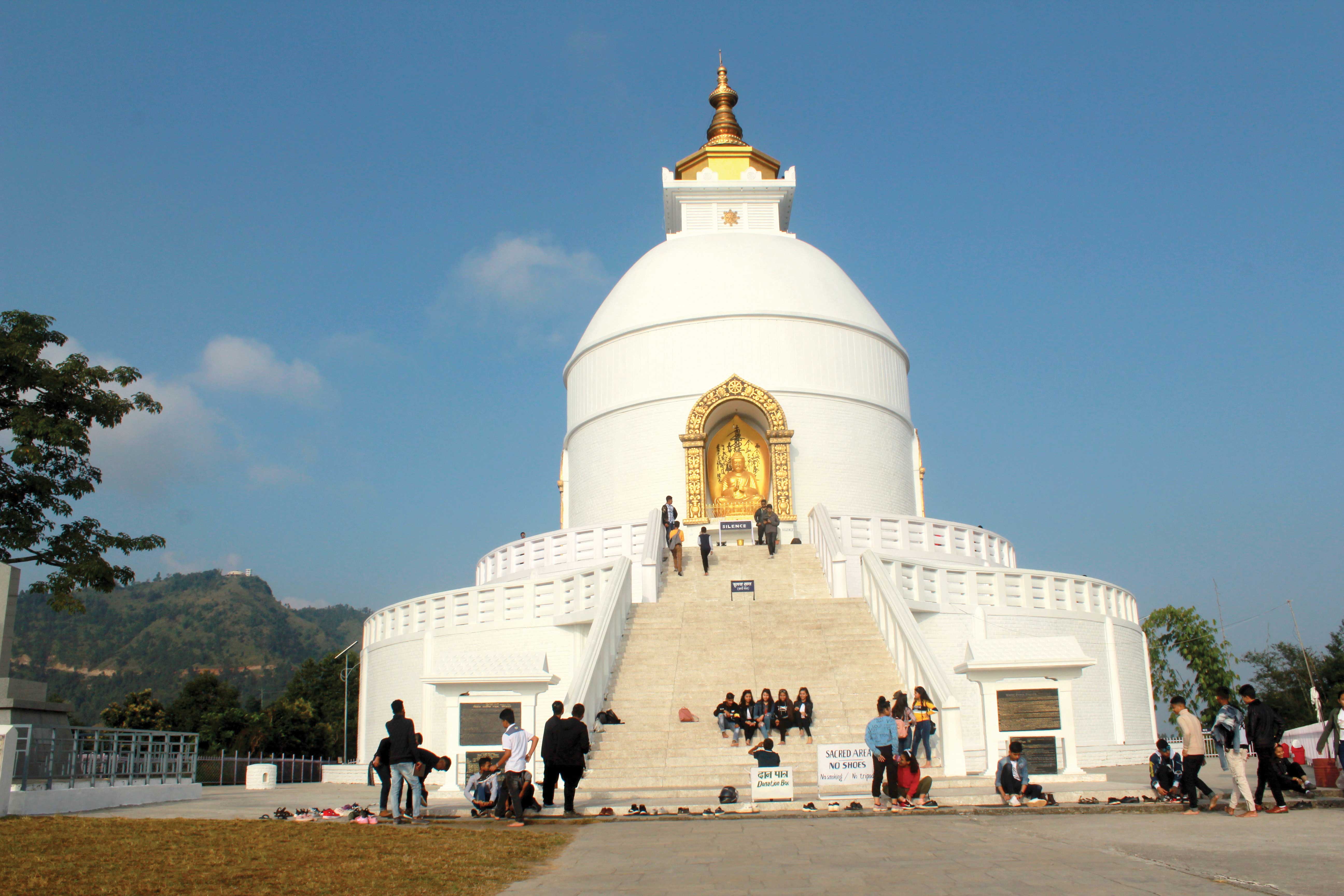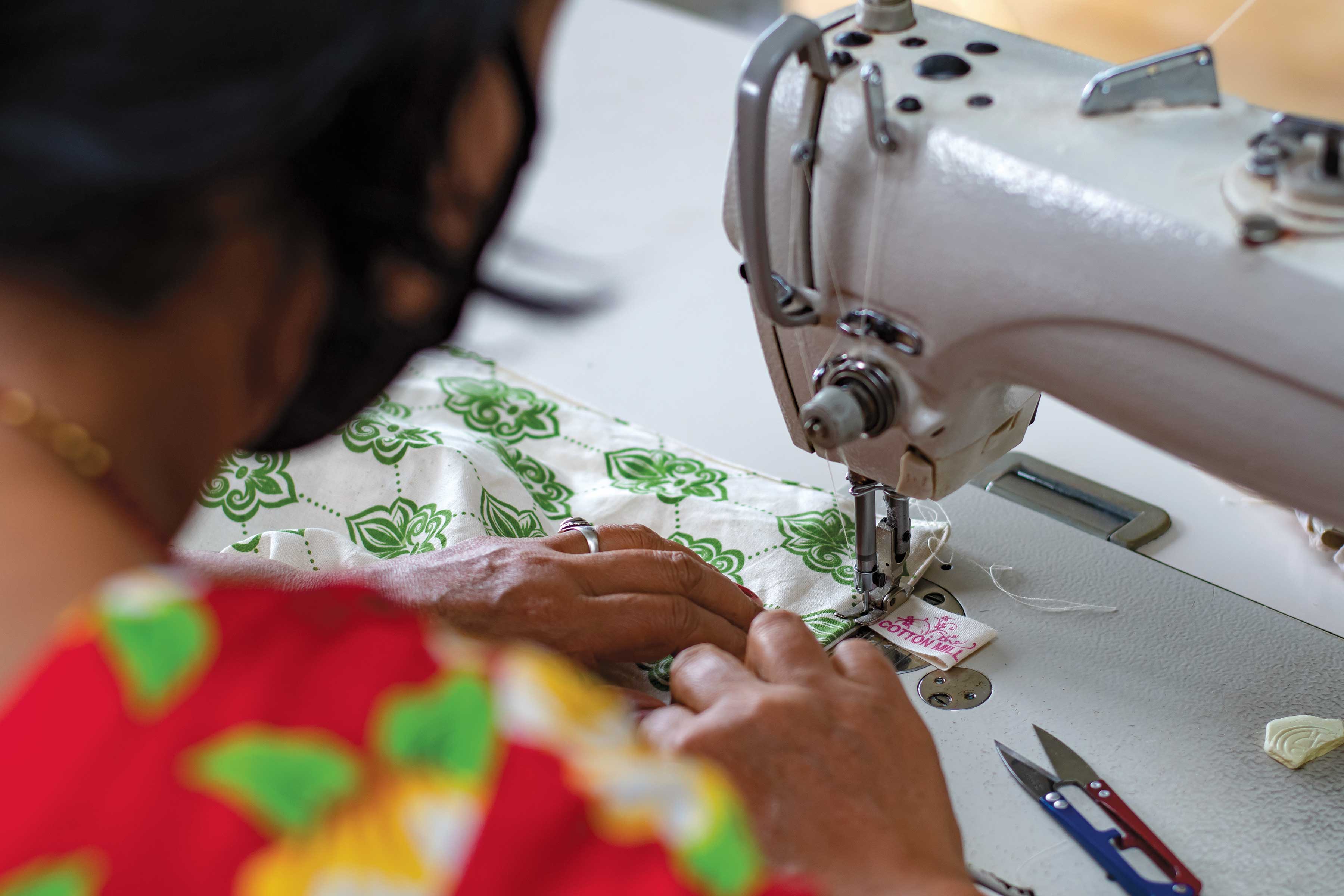Pokhara has to be one of the best all-round places that you can visit in Nepal. How could you dislike its clean and quiet streets, good food, diverse ethnic groups, the weather, the views, the good transport? Really the list is endless. But what happens when you get a little tired of all that comfort and want to skip town for a day trip or more? Well, here’s my recommendation. Next time you are on the mainstreet, look upwards with your back towards Damside. A little to your right is a hill that rises up about 500-600 m. Sarangkot is its name. A hillside retreat, if you feel a deep need for a change in scenery.

Paragliders sail through the air over Pokhara's serene Phewa Tal (Lake)
Sitting up in Sarangkot, one looks down on the vastness of Phewa Tal (Lake), with perfect views of the World Peace Pagoda, and from Sarangkot peak, the dominating Himalayan skyline is always impressive. And, if you are an adrenaline junky or just don’t fancy taking the bus back down, you can always paraglide your way back down to Pokhara as Sarangkot is the famed home of paragliding in Nepal and the Himalayas. In and around the village is a small selection of clean guesthouses and lodges to stay in. We stayed with Muthi and his family in the Panorama located as you arrive up the road to the village near the paragliding take-off pads, offering eagle-eye views of Pokhara. Up here, it is good entertainment on lazy days.
How To Get Up And Down
How one gets up to Sarangkot all depends on how difficult you want to be on yourself. There are walking paths up from Pokhara taking about four hours, or you can take the local bus from the main bus park in Pokhara and then have a little day trek back down from above. You could, of course, always just glide down with the thermals if you are brave enough. The paragliding companies also
have microbuses going up and down the hill to the take-off pads, and they will take tourists for about 200 rupees. (For Nepalis it is cheaper.) Just go visit one of the numerous paragliding offices in Pokhara and arrange a lift up the next day. A taxi will cost at least 600 rupees just to go up. Be warned, there is a toll on the road for tourists going up in private cars starting from 25 rupees, but this goes towards further developing the road, making it not so bad.
In And Around The Village
The village itself is spread along a set of steps that lead to Pumi Kali, the top of the village where the local Shiva Temple is located, along with the new one that is being constructed. A little further up the hill is a Kali Temple housed within a small army base. Inside the base is also a public viewing area looking down to the lake and around to the hills and mountains for vast distances. There is even a set of powerful binoculars for viewing, reminiscent of a promenade on the Cliffs of Dover.
The village has a small selection of simple restaurants and teashops. Also, local products such as shawls and handicrafts are sold in a few shops along the steps. The locals, mostly Bahuns, Chhetris and Magars are friendly and quick with a warm smile. There are plenty of small walks to do around the town, not to anywhere specific as such, but Sarangkot was once on the old salt-trading road to Tibet and the early trekking routes into the high Himals from Pokhara town. Today, however, it is just a small quiet village dependant on tourism.

Phewa Tal as seen from Sarangkot
On the night that my photographer companion and I stayed in Sarangkot last September, there was a trecherous storm. Although I slept through it, a local lady living next to us was struck by lighting in the early hours. Muthi caringly took her down to the hospital in Pokhara at three in the morning, but to no avail. She passed away. In the morning, when I awoke, all seemed normal at first, but the remaining family members looked shaken. I could see the strength of the storm when I looked upwards to see the half a dozen outdoor light-fittings blown clean out of their concrete settings due to the intensity of the storm. So, always be wary if out at night on a high hill in a Himalayan monsoon storm.
When Best To Visit
For views of the mountains, the crisp cloudless autumn and winter seasons are the best. But this involves dealing with cold weather conditions. So remember to bring some warm clothes. However, if you find yourself in Pokhara in the hot season, sweating a little too much, then you could head to Sarngkot for a breeze and to a climate a few degrees cooler and with a few less mosquitoes. Either way, anytime is a good time to head up towards the clouds.
Her name is Bishnu Chhetri. What makes her special you may ask? Ever wondered how shawls are made? Just step into her little shop and workspace while walking up or down from the village’s viewing points. She uses a traditional handloom and makes Topis (traditional Nepali hats for men), shawls, neckties and blankets. Using her Tan (loom), she makes a standard shawl in about six days. But what sets her apart is that she does not make “traditional Sarangkot styles.” Why? She is from Palpa in the lowlands of the west, and she makes traditional Purbeli Dhaka, a traditional style and pattern in Nepali culture.

For Bishnu, working the loom and the shop is just a job, but she says thankfully it is a job that she likes to do.
Pat Kauba is a freelance writer and photographer who has an unhealthy obsession with travel. He can be contacted at patkauba@gmail.com.











